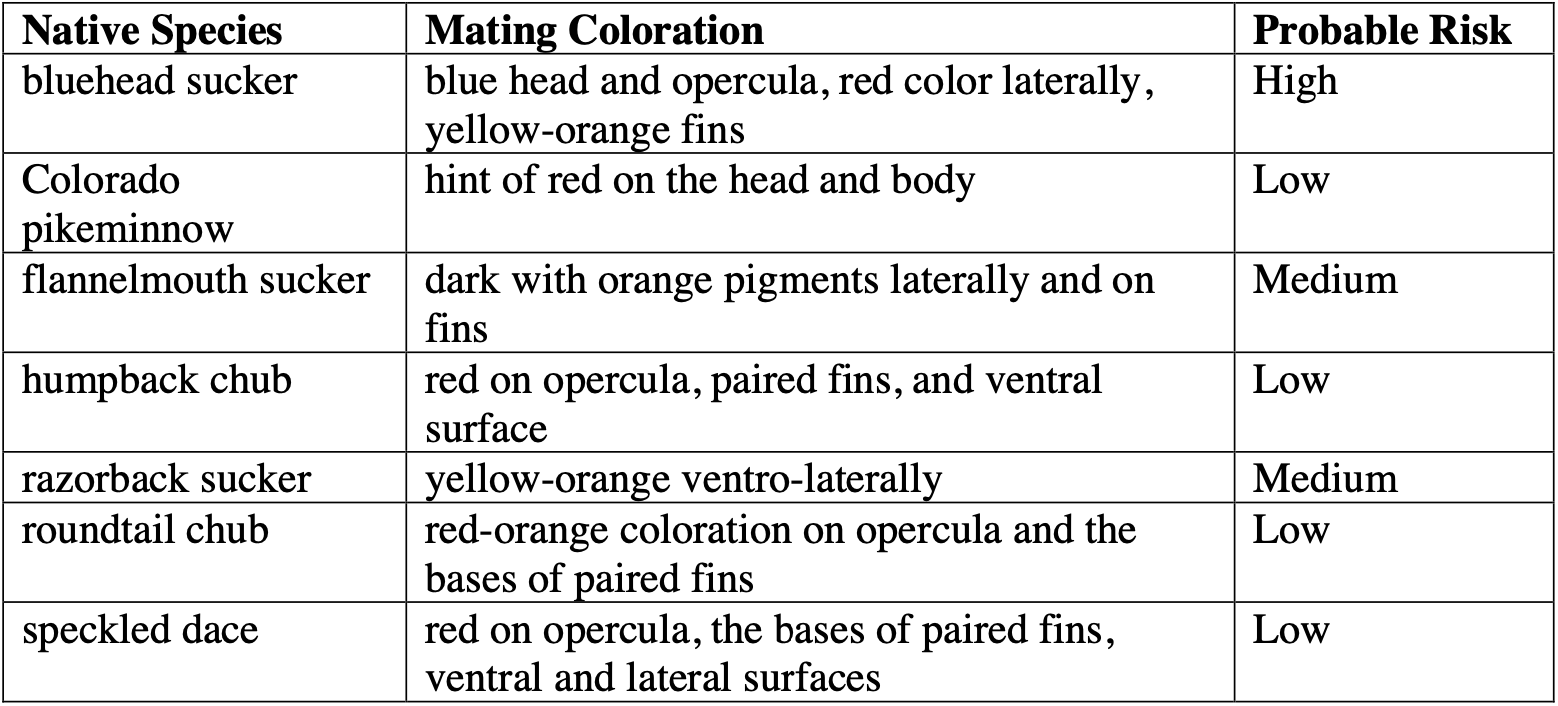While sampling on the Green River during June 2006, I observed two species of native fish, the flannelmouth sucker and speckled dace, in their breeding coloration. Their vibrant appearances immediately caught my eye and made me wonder how it might affect these already- imperiled fishes.
Since the Green River was originally a very turbid system, it is assumed that this coloration was intended for the clearer tributaries where many migrated for spawning. Today, however, Flaming Gorge Dam increases water clarity in the river by removing fine sediments from the system. This alteration, in conjunction with presence of invasive visual piscivores (e.g. northern pike and smallmouth bass), could lead to an increased risk of predation during the breeding season. The result would be not only the loss of the mature native fishes, but the offspring it was about to produce as well.
As the table below indicates, many of the breeding phenotypes involve a red-based coloration. Red, due to its short wavelength, is the most rapidly attenuated color in the visual spectrum, and hence may not greatly expose their presence to predators. Fishes like the bluehead sucker, however, whose longer wavelength blue coloration is the least easily attenuated may be at a greater risk.
Efforts are currently underway to re-establish healthy native fish populations within the Green River. This includes altered flow and temperature regimes that are closer to natural pre- dam conditions, stocking programs, and habitat restoration. A reduction in water clarity, however, appears logistically impossible as the design of Flaming Gorge Dam would not allow it and it would impede upon the blue ribbon fishery in the tailwaters. The frequency of clarity- related predatory events should lessen naturally downstream with the addition of turbid waters from tributaries.

